The Rhodesian Ridgeback is a distinguished breed, known not only for the characteristic ridge along its back but also for its history as a lion hunter in southern Africa. This large, athletic dog requires a diet that can maintain its energy levels and overall health. Knowing how much to feed your Rhodesian Ridgeback is crucial for their well-being and can be influenced by various factors including age, weight, activity level, and the specific caloric content of their food.
1. Nutritional Requirements of Rhodesian Ridgebacks
Rhodesian Ridgebacks are strong, muscular dogs, and their diet must support their build and energy requirements. They generally require a high-quality diet rich in proteins to support muscle growth and maintenance, fats for energy, and carbohydrates for endurance. Essential vitamins and minerals must be a part of their daily intake to ensure a balanced diet that supports all bodily functions.
Adult Rhodesian Ridgebacks typically benefit from foods that are formulated for large breeds with high activity levels. Puppies, who are growing rapidly, need a diet that’s rich in calories and nutrients to support their development. Senior dogs often require fewer calories but still need a diet high in quality protein to help maintain muscle mass.
2. Determining Food Portions
The amount of food a Rhodesian Ridgeback needs can vary greatly from one individual to another. A standard guideline is:
- Puppies: For puppies under six months, three to four meals a day are recommended, with the quantity of high-quality puppy food adjusted according to the puppy’s growth and energy levels.
- Adults: An adult Rhodesian Ridgeback often does well with two meals a day. Portion sizes can range from 2.5 to 3 cups of dry dog food per meal, depending on the food’s caloric content and the dog’s size and activity level.
- Seniors: Older Ridgebacks might need a reduction in portion size to prevent obesity, particularly if their activity level has decreased.
Always use the feeding guide on the dog food package as a starting point, but remember that these are formulated for the average dog. Your Ridgeback may have different needs based on its unique characteristics.
3. Caloric Content and Feeding Amounts
An adult Rhodesian Ridgeback’s daily caloric needs generally range from 1,700 to 2,200 calories, but these needs can vary. For example, if your adult Ridgeback is highly active, it might require more calories to maintain its weight and support its energy levels.
Let’s assume your chosen brand of dog food provides 400 calories per cup. If your Ridgeback needs about 2,000 calories a day, that would mean you would need to feed approximately five cups of food daily, split into two meals. Monitoring your dog’s weight and body condition is the best way to determine if dietary adjustments are needed.
4. Frequency and Timing of Feeding
Feeding your Rhodesian Ridgeback at regular intervals helps to regulate their metabolism and aids in digestion. Two meals a day is typical for adult Ridgebacks. Puppies require more frequent feeding times due to their growth demands.
Consistency in both the timing of meals and the amount of food is key to maintaining a healthy weight. Avoid free-feeding, which can lead to overeating and weight gain.
5. Special Dietary Considerations
Some Rhodesian Ridgebacks may have special dietary requirements due to health issues such as allergies or sensitivities. For example, a dog with a sensitive stomach may benefit from a limited-ingredient diet. Dogs with allergies may require a grain-free or novel protein diet. Always work with your veterinarian to identify and cater to these special dietary needs.
6. Adjusting for Weight and Activity Level
As with any breed, the dietary needs of a Rhodesian Ridgeback will change throughout its life. Active, working, or pregnant/nursing dogs will require more calories. Conversely, less active or older dogs will require fewer. It’s important to adjust your dog’s food intake based on their activity level and weight. A lean physique is ideal for the Ridgeback; excess weight can put undue stress on joints and organs.
7. Cost of Feeding a Rhodesian Ridgeback
The cost of feeding a Rhodesian Ridgeback will depend on the choice of food and where you live. High-quality dog food, which is highly recommended for this breed, can be more expensive but may provide better nutrition and potentially reduce future healthcare costs.
On average, a 40-pound bag of high-quality dog food might cost between $60 to $100. Assuming an adult Ridgeback eats around 5 cups a day, this bag would last approximately one month, bringing the monthly cost to between $60 to $100, not accounting for treats or special dietary supplements.
If you choose to go with a raw diet, the costs can be significantly higher, often ranging from $2.50 to $5.00 per pound, with an adult Ridgeback possibly consuming around 1 to 2 pounds per day. This would bring the monthly cost to somewhere between $75 to $300.
These costs are approximations and can vary widely based on regional prices, dietary needs, and food quality.
Our 5 Top Foods for Rhodesian Ridgebacks
The diets were selected by our founder Justin Palmer, a certified canine nutrition expert, specifically with Rhodesian Ridgebacks in mind:
| Food | Pros | Cons |
|---|---|---|
|
|
|
|
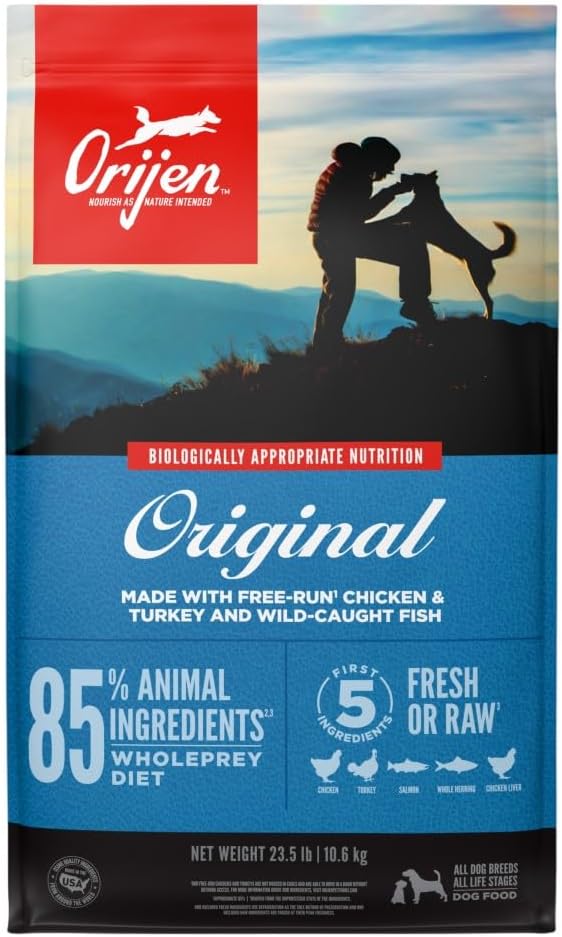
Check Today's Price on: |
|
|
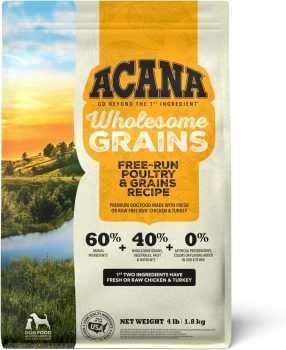
Check Today's Price on: |
|
|
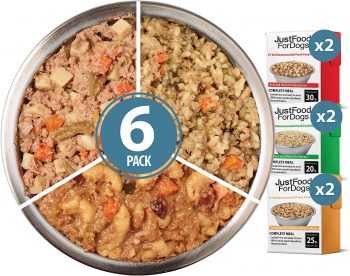
Check Today's Price on: |
|
|
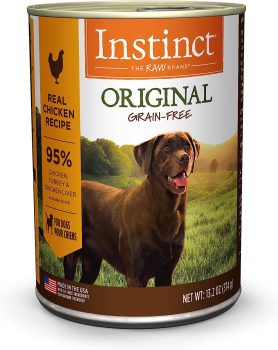
Check Today's Price on: |
|
|
Conclusion
Feeding a Rhodesian Ridgeback requires attention to detail and an understanding of the breed’s specific needs. The right amount of high-quality food will not only keep your Ridgeback in peak physical condition but also contribute to their overall health and longevity. As with any breed, the costs of feeding a Ridgeback should be weighed against the benefits of providing a diet that will ensure they live a full and vigorous life.
Frequently Asked Questions About Feeding a Rhodesian Ridgeback
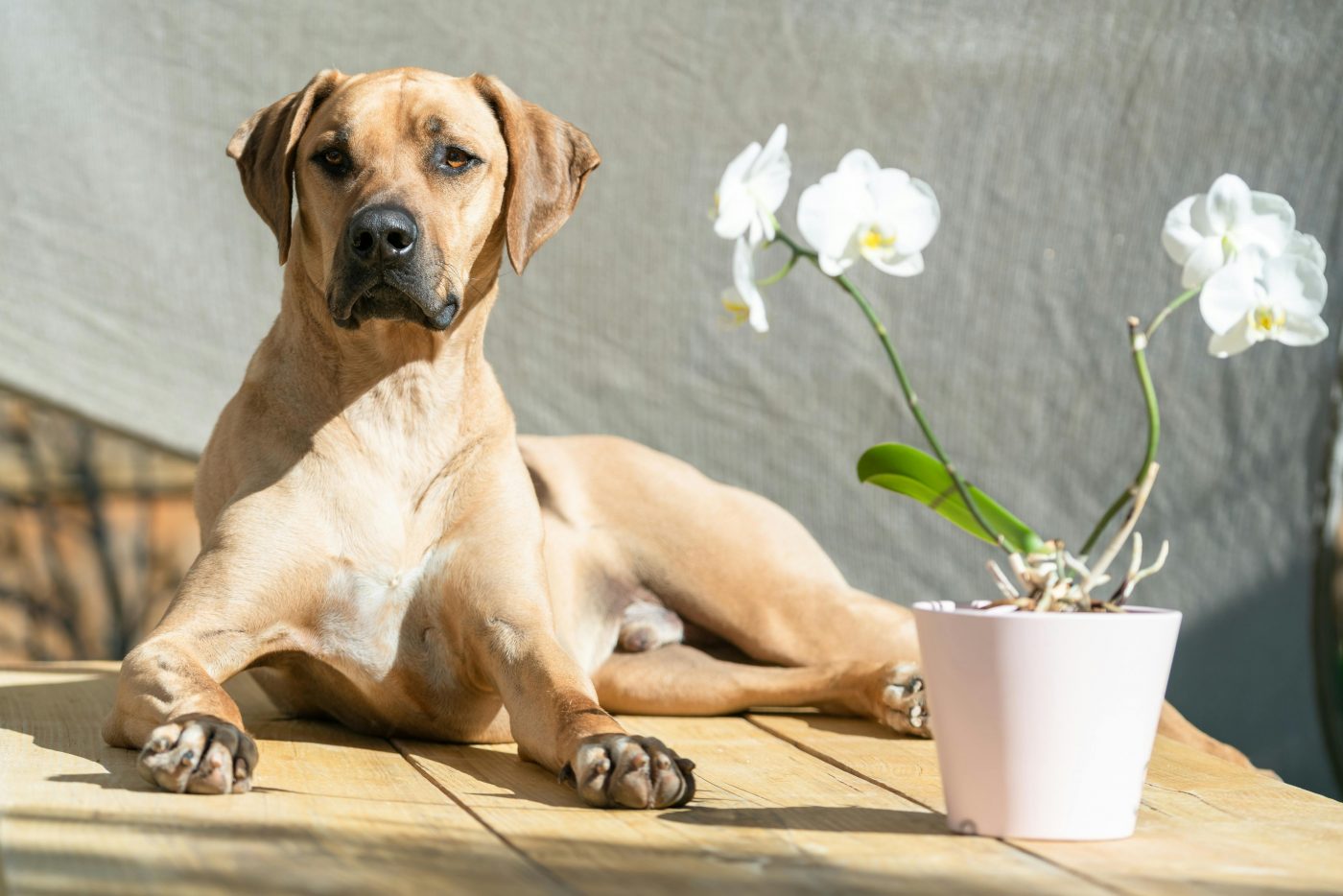
1. How many times a day should I feed my adult Rhodesian Ridgeback?
Adult Rhodesian Ridgebacks typically thrive on two meals per day. Feeding them in the morning and evening helps to spread out their caloric intake and supports their energy levels throughout the day. This routine also aligns with their digestive rhythms and helps prevent bloat, which can be a concern in larger breeds.
2. Can I feed my Rhodesian Ridgeback a grain-free diet?
You can feed your Rhodesian Ridgeback a grain-free diet if it is nutritionally balanced and meets all their dietary needs. However, it’s essential to choose a high-quality grain-free food that is well-researched and constituted, especially since some grain-free diets have been under scrutiny for their association with heart issues in dogs. Always consult with a veterinarian to ensure the diet is appropriate for your dog’s specific health profile.
3. What is the ideal weight for a Rhodesian Ridgeback?
The ideal weight for a Rhodesian Ridgeback can vary based on the dog’s size and build but typically ranges from 70 to 85 pounds for females and 85 to 105 pounds for males. Monitoring body condition is crucial; you should be able to feel the ribs without excess fat covering them, and your dog should have a visible waist when viewed from above.
4. Are there any foods I should avoid feeding my Rhodesian Ridgeback?
Yes, certain foods are toxic to dogs and should be avoided, including chocolate, grapes, raisins, onions, garlic, and xylitol-containing products. Additionally, avoid foods that are too rich or fatty, which can cause digestive issues or contribute to obesity. Always stick to a diet formulated for dogs and consult with your vet if in doubt.
5. How much water should my Rhodesian Ridgeback drink each day?
A Rhodesian Ridgeback should always have access to clean, fresh water. The general rule is that dogs should drink approximately one ounce of water per pound of body weight per day. However, active dogs or those in hot climates may need more. Monitor your dog’s water intake and consult your vet if there are any major changes, as it can be a sign of health issues.
6. Can Rhodesian Ridgebacks eat raw meat as part of their diet?
Rhodesian Ridgebacks can eat raw meat as part of a carefully planned raw diet. However, it’s important to ensure that the diet is balanced and includes the right proportions of bones, organs, and muscle meats. Speak with a veterinarian or a canine nutritionist to create a raw feeding plan that’s safe and nutritious for your dog.
7. How do I know if I’m feeding my Rhodesian Ridgeback the right amount of food?
The best way to determine if you’re feeding the right amount is to monitor your Rhodesian Ridgeback’s body condition and weight. A dog that is maintaining a healthy weight without excess fat is likely eating the correct amount. Regular check-ups with your vet can also help ensure you’re on the right track with your dog’s nutrition.
8. Should I give my Rhodesian Ridgeback dietary supplements?
Most Rhodesian Ridgebacks will not need dietary supplements if they are being fed a complete and balanced commercial dog food. However, some specific situations or health conditions may require supplementation. Before adding any supplements to your dog’s diet, it’s important to consult with a veterinarian to avoid potential health risks.
9. How does the feeding requirement change as my Rhodesian Ridgeback ages?
As your Rhodesian Ridgeback ages, its metabolism can slow down, and its energy needs may decrease, necessitating a reduction in food quantity to prevent obesity. Senior dogs may also require food with different nutrient balances or enhanced digestibility. Adjust their diet gradually and in consultation with your vet as they transition to different life stages.
10. What are the signs of food allergies in Rhodesian Ridgebacks, and how do I address them?
Signs of food allergies in Rhodesian Ridgebacks may include itching, skin rashes, gastrointestinal issues, or chronic ear infections. If you suspect your dog has a food allergy, consult with your veterinarian. They may recommend an elimination diet to identify the allergen and then a subsequent dietary adjustment to a hypoallergenic or limited-ingredient diet to manage the condition.
 Check Today's Price on:
Check Today's Price on: Toledo, United States.
Toledo, United States.